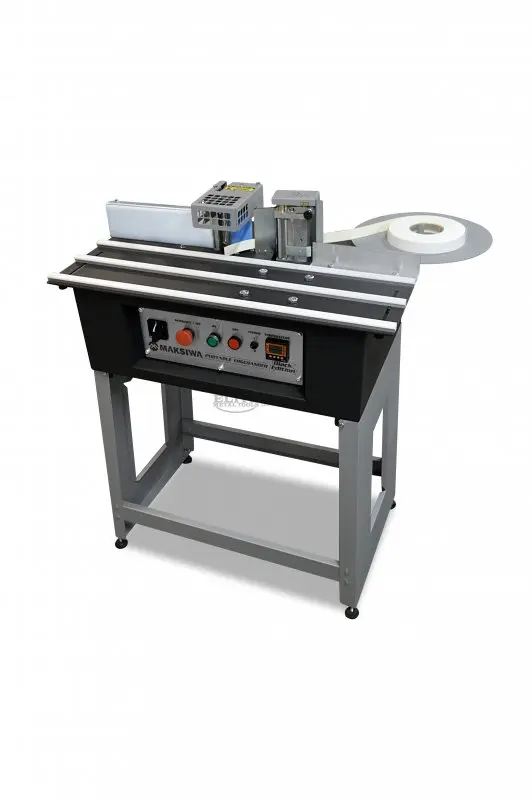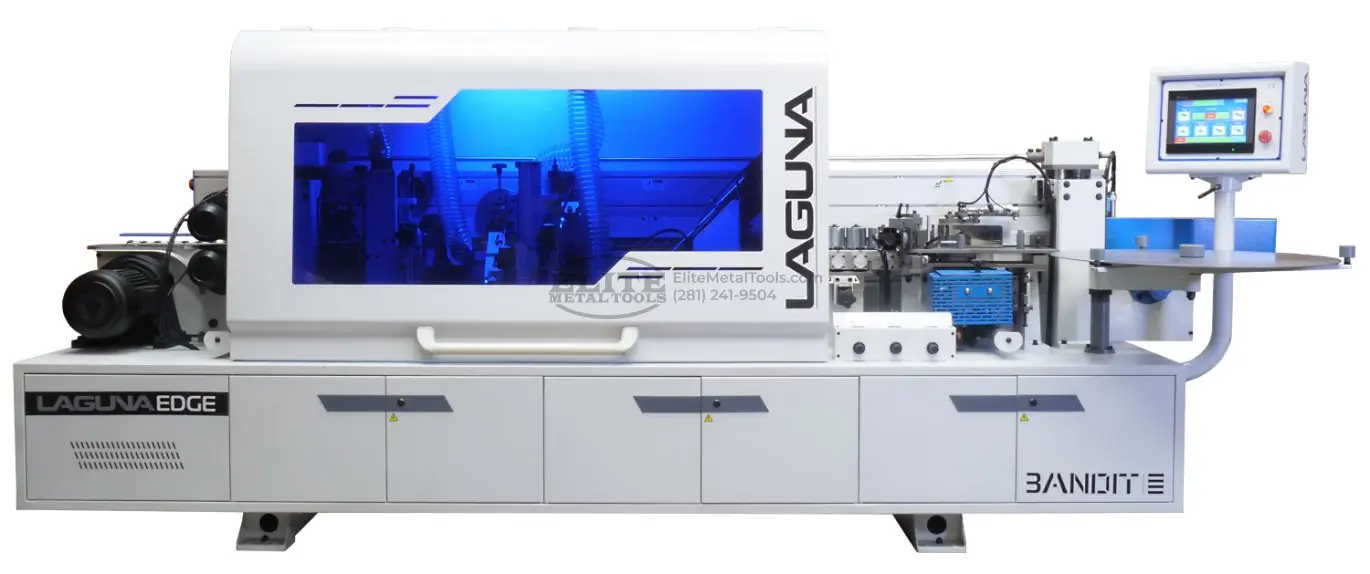Elite Metal Tools Articles
Industry news, tips, and updates on all things Elite Metal Tools
Lets Learn About- Edgebanders
The Lets Learn About Series is an excercise in which we try to anticipate the most common questions as they relate to the purchase of machinery and accompany them with the answers. If you have a question that you think would be a good fit please contact us.
The History of Edgebanders
The history of edgebanders can be traced back to the early 20th century when manual methods were predominantly used for applying edgebanding materials to wooden surfaces. Craftsmen would painstakingly glue and hammer strips of veneer or solid wood onto the edges of furniture and cabinetry. However, this labor-intensive process was time-consuming and limited in terms of efficiency and precision.
As technology progressed, the first mechanized edgebanders emerged in the mid-20th century. These early machines automated the application of edgebanding materials, significantly reducing production time and improving consistency. Over the years, edgebanders have continued to evolve, incorporating advanced features, materials, and techniques to meet the ever-growing demands of the woodworking industry.
Types of Edgebanders
Edgebanders come in various types, each suited for different woodworking applications. Understanding the distinctions between these types can help you make informed choices for your specific needs. Let's explore some common edgebander categories:
1) Manual Edgebanders: Manual edgebanders are portable, handheld machines that are ideal for small-scale projects or on-site repairs. They are user-friendly, affordable, and offer greater flexibility. Brands like Maksiwa and Minimax produce reliable manual edgebanders that provide precise control and ease of use.
2) Automatic Edgebanders: Automatic edgebanders are larger machines designed for high-volume production. These advanced systems feature automated feeding, gluing, trimming, and finishing processes. Brands like Cantek and Laguna are renowned for their high-quality automatic edgebanders that combine efficiency, precision, and versatility.
Benefits of Using Edgebanders in Woodworking
Edgebanders offer several advantages that make them indispensable tools in woodworking. Here are some key benefits:
1) Enhanced Aesthetics: Edgebanders allow for seamless edge finishes, hiding unsightly edges and providing a polished, professional appearance to wooden surfaces.
2) Increased Efficiency: By automating the edgebanding process, these machines significantly reduce labor time and improve productivity, making them essential for large-scale production.
3) Improved Durability: Edgebanding materials enhance the durability of wooden surfaces by providing a protective layer against wear, moisture, and impact.
4) Versatility: Edgebanders can handle a variety of edgebanding materials, including PVC, ABS, veneer, and solid wood, catering to diverse project requirements./product/12964
Choosing the Right Edgebander for Your Woodworking Projects
When selecting an edgebander, it's crucial to consider your specific woodworking needs, budget, and desired level of automation. Factors such as feed speed, gluing mechanisms, trimming options, and control systems should also be evaluated. Brands like Maksiwa, Minimax, Cantek, and Laguna offer a range of models with different features and capabilities, allowing you to find the edgebander that aligns with your requirements.
Industry Trends and Innovations in Edgebanding Technology
1) Digital Integration: Edgebanders are becoming increasingly interconnected with digital systems, enabling seamless integration with computer-aided design (CAD) software and improving workflow efficiency./product/15610
2) Laser Technology: Laser edgebanding is gaining popularity due to its precise and clean results. It eliminates the need for adhesive materials by melting the edgebanding directly onto the workpiece, resulting in seamless joints and superior aesthetics.
3) Eco-Friendly Solutions: Sustainable edgebanding materials, such as recycled plastics and water-based adhesives, are becoming more prevalent, reflecting the industry's commitment to eco-friendly practices.
4) Customization Capabilities: Edgebanders are now equipped with advanced features for customizing edge profiles, textures, and patterns, allowing woodworkers to create unique and personalized designs.
Troubleshooting and Maintenance Tips for Edgebanders
To ensure optimal performance and longevity of your edgebander, regular maintenance is essential. Here are some troubleshooting and maintenance tips:
1) Proper Cleaning: Regularly clean the machine, removing any debris or adhesive residue that could affect its performance.
2) Blade Sharpening: Keep the trimming blades sharp to ensure clean and precise cuts.
3) Lubrication: Follow the manufacturer's guidelines for lubricating moving parts to prevent friction and ensure smooth operation.
4) Calibration and Adjustment: Periodically calibrate and adjust the machine to maintain accuracy in edgeband application, trimming, and other functions.
Summary
In conclusion, edgebanders have transformed the woodworking industry, revolutionizing the way edgebanding materials are applied to wooden surfaces. From their early manual iterations to the advanced automatic machines available today, edgebanders have significantly improved efficiency, aesthetics, and durability in woodworking projects. Brands like Maksiwa, Minimax, Cantek, and Laguna offer a range of edgebanders catering to diverse needs and budgets.
By understanding the history, types, benefits, and maintenance of edgebanders, woodworkers can make informed decisions and achieve high-quality results in their projects. As industry trends continue to evolve and new innovations emerge, edgebanders will remain vital tools for enhancing efficiency, precision, and creativity in woodworking.
Remember, selecting the right edgebander for your specific requirements, considering factors such as automation level, material compatibility, and desired features, is crucial to optimize your woodworking processes and achieve outstanding results.
Now that you have a comprehensive understanding of edgebanders, unleash your creativity, and take your woodworking projects to new heights with the power of this remarkable tool.

